
Do you have a question about the Toshiba RAS-4M27GAV-E and is the answer not in the manual?
| Brand | Toshiba |
|---|---|
| Model | RAS-4M27GAV-E |
| Category | Air Conditioner |
| Language | English |
Crucial safety rules for unit installation, including grounding and qualified personnel.
Guidelines for safe daily operation, avoiding extreme conditions and handling abnormalities.
Precautions for handling, moving, and servicing the unit to prevent electric shock or fire.
Important requirements for proper installation, like draining and electrical connections.
Key precautions for unit operation, including ventilation and avoiding special uses.
Visual guide to indoor and outdoor unit components, connecting ducts, and filters.
Operating the unit without the remote controller using the switch panel.
Adjusting electrical voltage settings for the unit based on supply.
Detailed explanation of each button's function on the remote controller.
Meaning of symbols and indicators displayed on the remote controller.
Proper installation of batteries in the remote controller.
Adjusting the time on the remote controller's display for accurate timing.
Conditions affecting remote signal transmission and reception, like sunlight or obstacles.
Guidance for mounting the remote controller holder on a wall or pillar.
Unit automatically selects mode (cool, heat, fan) based on room temperature.
Unit automatically switches between modes to maintain desired conditions.
Manual selection of Cooling, Heating, or Fan Only operations.
Explanation of the dehumidification function and its settings.
Mode for rapid cooling or heating performance, automatically controlling room conditions.
Instructions for setting ON and OFF timers for automated operation.
Setting both ON and OFF timers simultaneously for sequential operation.
Scheduling timers to activate at the same time every day.
Saving frequently used operational configurations for convenience.
Operating the unit using previously memorized settings.
Enabling automatic unit restart after power interruption without remote control.
Disabling the auto restart capability, requiring manual restart.
How the unit selects modes (cool, heat, fan) based on outdoor temperature.
Explains behavior of special operational modes like High Power and ECO Timer.
Details on heating performance, preheating, and frost management.
Recommended temperature and humidity ranges for optimal unit performance.
Advice for efficient and cost-effective unit usage, including timer and airflow adjustments.
Instructions for maintaining the remote controller, emphasizing gentle cleaning methods.
Steps for preparing the unit for extended periods of non-use, like running fan dry.
Instructions for cleaning the air intake grille to maintain airflow.
Recommended intervals and methods for air filter maintenance for optimal performance.
Unit protection features like 3-minute delay and response to power failures.
Rules governing mode selection when different rooms have conflicting settings.
Details on heating efficiency, preheating, and performance in low temperatures.
Recommended environmental ranges for optimal unit performance and safety.
Restrictions and recommendations for unit placement to avoid interference and noise.
How installation affects noise and vibration transmission to neighbors.
Basic steps to take before seeking professional service for unit issues.
Verifying conditions like power, fuses, and remote batteries when the unit fails to start.
Diagnosing and resolving poor cooling or heating due to blocked airflow or incorrect settings.
Explaining common sounds (expansion/contraction) and smells from the unit.
Understanding the meaning of flashing operation lights, especially after power failure.
How the unit manages frost build-up during heating operation via defrosting.
Reasons for changes in the direction or speed of airflow, including warm air control.
Explaining visible vapor from the unit during cooling or defrosting operation.
Issues when fan speed or mode cannot be changed, often due to AUTO or DRY modes.
Problems with the remote controller sending signals, possibly due to timer settings or unit status.
Problems related to the remote's display functionality, such as not turning on or disappearing.
Indoor unit not emitting response sounds when commands are sent from the remote.
Statement regarding compliance with environmental directives and proper disposal.






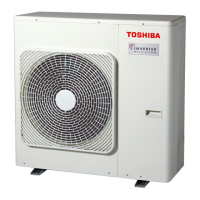
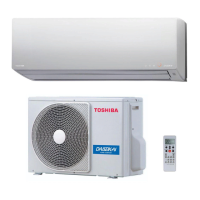
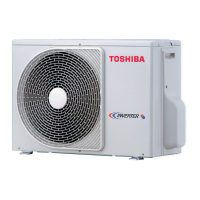

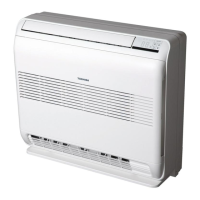
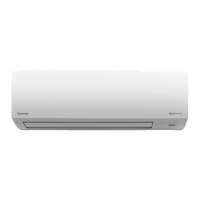
